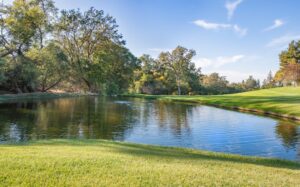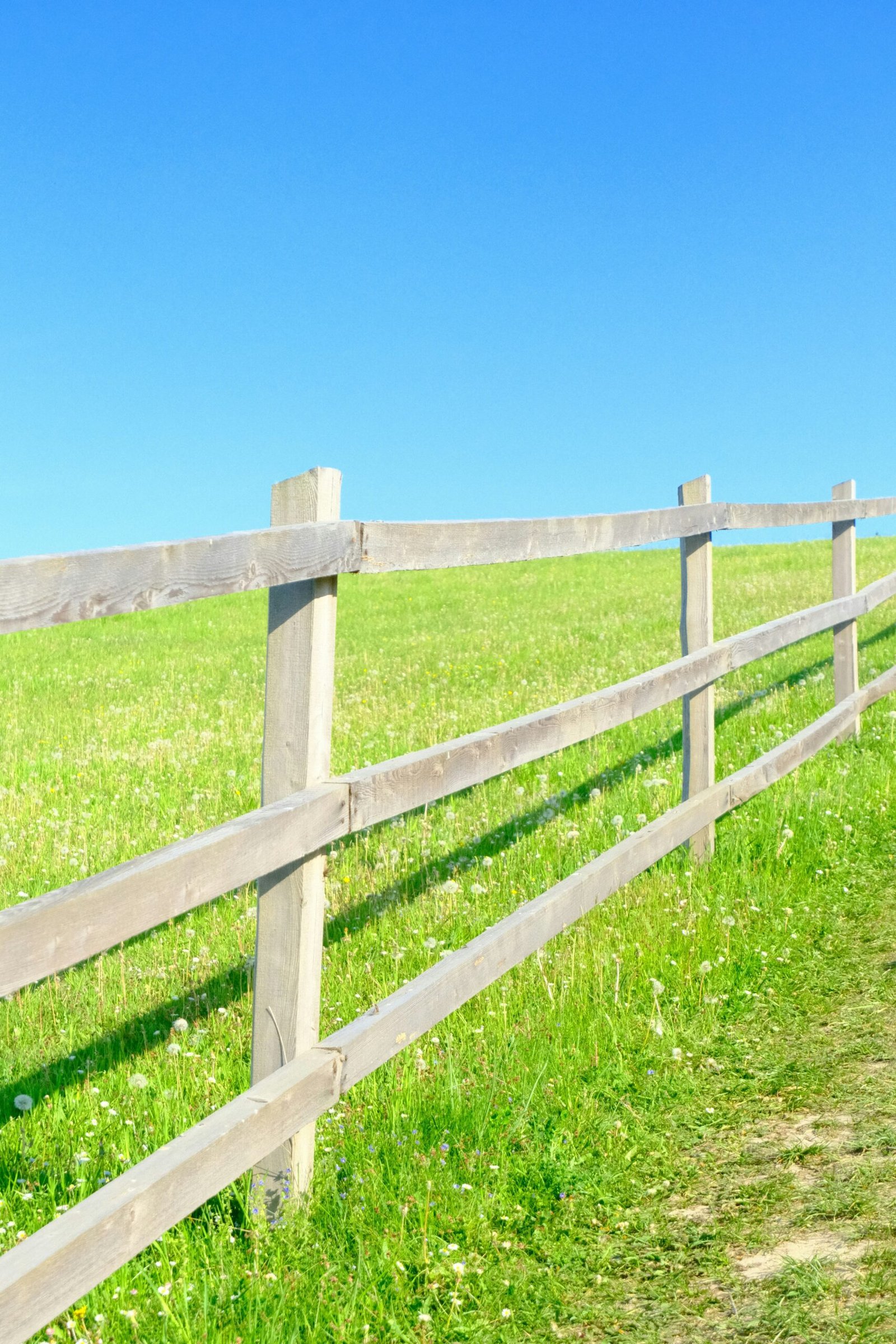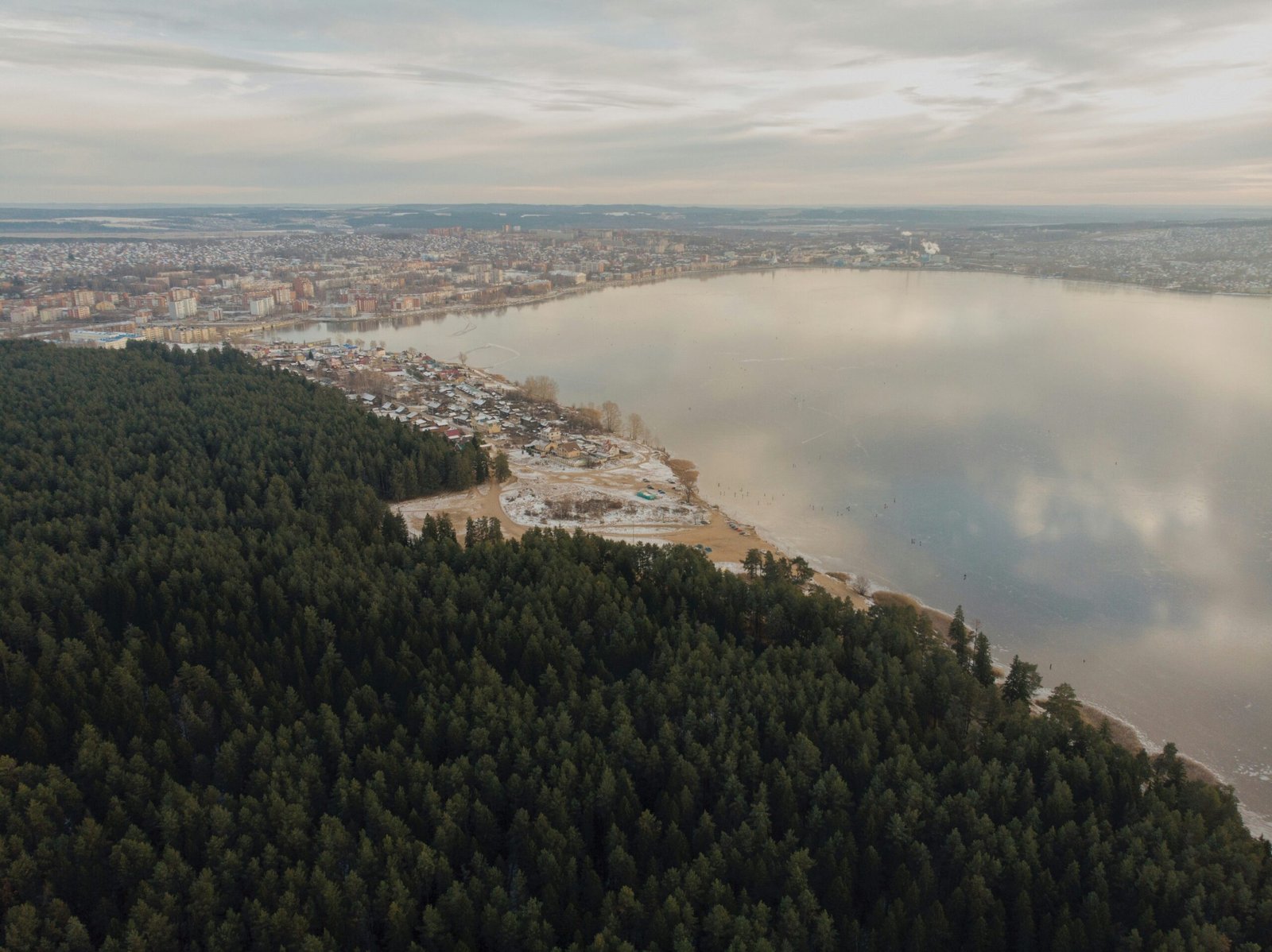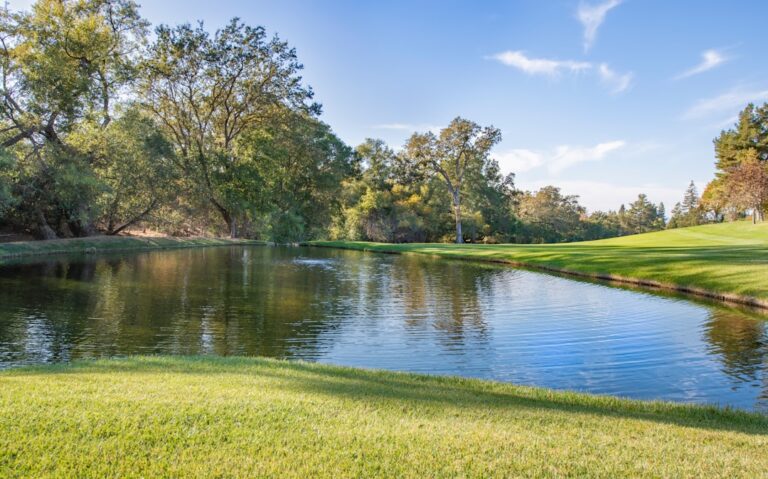Introduction to Backyard Trees
Trees play a pivotal role in backyard landscaping, offering a myriad of benefits that extend beyond mere visual appeal. One of the most significant advantages of incorporating trees into your backyard is the provision of shade. During hot summer months, shaded areas created by trees can reduce temperatures, making outdoor spaces more comfortable and enjoyable. This natural cooling effect can also contribute to lowering energy costs by reducing the need for air conditioning within nearby homes.
In addition to their practical benefits, trees enhance the aesthetic appeal of any landscape. They add layers of texture, color, and structure, creating a dynamic and picturesque outdoor environment. Trees can serve as focal points in a garden, provide a backdrop for other plants, or even create natural barriers for privacy. The seasonal changes in foliage and the potential for flowers or fruits further contribute to the visual interest and beauty of a backyard.
Moreover, trees play a crucial role in supporting local wildlife. They offer habitats for birds, squirrels, and various insects, fostering biodiversity and promoting a healthy ecosystem. The presence of trees can attract pollinators, such as bees and butterflies, which are essential for the health of many plant species. By planting trees, homeowners can actively contribute to sustaining local wildlife populations.
The diversity of tree species available allows for tailored landscaping solutions to meet various needs and preferences. From towering oaks and maples that provide expansive canopies, to ornamental cherry blossoms and dogwoods that offer seasonal beauty, there is a tree to suit every landscape design. Evergreens like pines and spruces provide year-round greenery, while deciduous trees can offer seasonal shade and fall color.
In summary, trees are an invaluable component of backyard landscapes, offering shade, aesthetic enhancement, and wildlife support. The variety of tree species available ensures that every backyard can benefit from their unique attributes, making them an essential consideration for any landscaping project.
Choosing the Right Tree for Your Backyard
When selecting a tree for your backyard, it is paramount to consider various factors to ensure it thrives and complements your landscape. The first aspect to evaluate is the climate of your region. Different tree species have distinct climate preferences; for instance, some trees flourish in colder climates, while others thrive in warm, tropical conditions. Consulting a local horticulturist or using a plant hardiness zone map can provide valuable guidance in making an informed decision.
Soil type is another crucial factor. Trees have different soil requirements, with some preferring well-drained sandy soils and others thriving in clay-rich or loamy soils. Conducting a soil test can help determine the pH and composition of your soil, allowing you to choose a tree species that will flourish in those conditions. Additionally, consider the soil’s fertility and whether it needs amendments to support healthy tree growth.
Sunlight exposure is equally important. Most trees need full sunlight to grow robustly, but some species can tolerate partial or full shade. Assess your backyard’s sunlight patterns throughout the day to select a tree that matches the available light conditions. This ensures the tree receives adequate light for photosynthesis, promoting healthy development.
Homeowners should also reflect on their specific needs and preferences. Are you looking for a shade tree, an ornamental tree, or one that produces fruit? Understanding your goals will narrow down your options to trees that meet your criteria. Furthermore, consider the maintenance requirements of the tree. Some species require regular pruning and care, while others are relatively low-maintenance.
Finally, it is essential to consider the tree’s mature size and growth rate. Ensure that the selected tree will have enough space to grow without interfering with structures, power lines, or other plants. A tree’s growth rate will also affect how quickly it reaches its full height and spread, impacting your landscape’s appearance over time. Selecting the right tree for your backyard is a thoughtful process that combines practical considerations with personal preferences, resulting in a harmonious and thriving outdoor space.
Maple Trees: Color and Versatility
Maple trees are renowned for their remarkable fall colors and versatile applications in backyard landscapes. Among the various types of maple trees, the Sugar Maple, Red Maple, and Japanese Maple stand out for their unique characteristics and specific growth requirements.
The Sugar Maple (Acer saccharum) is celebrated for its spectacular autumn foliage, which turns vibrant shades of orange, yellow, and red. This species is also well-known for producing the sap used to make maple syrup. Sugar Maples thrive in well-drained, slightly acidic soils and prefer full sun to partial shade. They can grow up to 75 feet tall, making them an excellent choice for larger landscapes where their expansive canopy can provide ample shade.
Red Maples (Acer rubrum) are another popular choice, primarily due to their brilliant red leaves that appear in the fall. They are highly adaptable and can grow in a wide range of soil conditions, from wet to dry. Red Maples are moderately fast growers and typically reach heights of 40 to 60 feet. Their adaptability and moderate size make them suitable for various landscape designs, including urban settings and smaller yards.
Japanese Maples (Acer palmatum) are prized for their delicate, lacy leaves and compact size, making them ideal for smaller gardens and ornamental purposes. These trees can display a wide range of leaf colors, from deep red to bright green, depending on the variety. Japanese Maples prefer well-drained, slightly acidic soil and partial shade, although some varieties can tolerate full sun. They usually grow to a height of 15 to 25 feet, making them perfect for adding a touch of elegance to any backyard.
When planting maple trees, it is essential to consider the specific needs of each type. Ensure that the soil is well-drained and meets the preferred pH levels for the chosen maple variety. Regular watering, especially during dry periods, and mulching around the base can help maintain soil moisture and temperature. Pruning is also necessary to remove dead or diseased branches and to shape the tree as desired. By adhering to these guidelines, you can enjoy the stunning beauty and versatility of maple trees in your backyard landscape for many years to come.
Oak Trees: Majestic and Sturdy
Oak trees have long been celebrated for their strength, longevity, and stately presence, making them a favored choice for homeowners seeking to enhance their backyard landscape. Among the various oak species, the White Oak, Red Oak, and Live Oak each offer unique benefits and characteristics that can enrich any outdoor space.
The White Oak (Quercus alba) is renowned for its impressive stature and sprawling branches. Reaching heights of up to 100 feet, this species is ideal for providing extensive shade, which can be a significant asset during hot summer months. White Oaks prefer well-drained, slightly acidic soils and thrive in full sun. Their robust root systems not only anchor the tree but also help prevent soil erosion, contributing to the overall health of the landscape. Moreover, the White Oak’s acorns are a valuable food source for various wildlife, including squirrels, deer, and birds.
Red Oak (Quercus rubra), another popular choice, is appreciated for its rapid growth and striking autumn foliage. Often reaching heights of 60 to 75 feet, Red Oaks can quickly establish a presence in any backyard. This species flourishes in acidic to neutral, well-drained soils and requires full sun to partial shade. The dense canopy of a mature Red Oak provides excellent shelter and nesting opportunities for birds, making it a vital component of a wildlife-friendly garden.
Live Oak (Quercus virginiana), with its picturesque, sprawling branches and evergreen leaves, offers a year-round visual appeal. Commonly found in the southern United States, Live Oaks can grow up to 80 feet tall and are well-suited to coastal regions due to their tolerance for salty and sandy soils. They prefer full sun to partial shade and require well-drained soils. Live Oaks are particularly noted for their resilience against strong winds and hurricanes, making them a practical choice for storm-prone areas. The tree’s acorns and dense foliage provide sustenance and habitat for various wildlife species.
Incorporating oak trees into your backyard landscape not only enhances its aesthetic appeal but also supports local ecosystems. Their majestic presence, coupled with their ability to provide shade, prevent soil erosion, and sustain wildlife, makes oak trees an invaluable addition to any outdoor space.
Cherry Trees: Beauty and Fruit
Cherry trees are an exceptional addition to any backyard landscape, offering both aesthetic beauty and the practical benefit of delicious fruit. There are several types of cherry trees that homeowners can choose from, each with unique characteristics and requirements. Among the most popular are Sweet Cherry, Sour Cherry, and Ornamental Cherry trees.
Sweet Cherry trees are favored for their delectable fruit, which is often enjoyed fresh, baked, or preserved. Varieties such as ‘Bing’ and ‘Rainier’ are well-known for their large, sweet cherries. These trees typically bloom in late spring, producing clusters of white or pink flowers. They require full sun and well-drained soil to thrive, and it’s important to plant them in pairs or groups to ensure cross-pollination, which is essential for fruit production.
Sour Cherry trees, on the other hand, are prized for their tart fruit, which is ideal for pies, jams, and other culinary uses. Varieties like ‘Montmorency’ and ‘Morello’ are popular choices. These trees also bloom in late spring, with blossoms that range from white to pale pink. Sour Cherries are generally more cold-hardy than Sweet Cherries, making them suitable for cooler climates. They can often self-pollinate, reducing the need for multiple trees, though planting more than one can still improve yield.
Ornamental Cherry trees are primarily grown for their stunning springtime blossoms rather than fruit. Varieties such as ‘Kwanzan’ and ‘Yoshino’ display an array of pink and white flowers, creating breathtaking scenery. These trees are relatively low-maintenance, requiring minimal pruning and care. While they do produce small, inedible fruit, their main appeal lies in their visual impact and the seasonal charm they bring to a landscape.
To ensure the healthy growth of cherry trees, it is crucial to follow key maintenance tips. Regular watering, especially during dry spells, is essential. Mulching around the base of the trees helps retain moisture and suppress weeds. Pruning should be done in late winter or early spring to remove dead or diseased wood, as well as to shape the tree. Fertilizing in early spring with a balanced fertilizer can also promote vigorous growth and abundant blooms.
By carefully selecting the right type of cherry tree and adhering to proper care guidelines, homeowners can enjoy the dual benefits of beautiful blossoms and tasty fruit, enhancing the overall appeal and functionality of their backyard landscape.
Evergreen Trees: Year-Round Greenery
Evergreen trees are a cornerstone of backyard landscapes, offering year-round greenery and numerous functional benefits. Unlike deciduous trees, evergreens maintain their foliage throughout the seasons, providing a consistent backdrop of color and texture. Among the most popular evergreen species for backyard landscaping are Pine, Spruce, and Cedar, each with unique characteristics and advantages.
Pine trees are highly valued for their fast growth and adaptability to various soil types. Species such as Eastern White Pine and Ponderosa Pine are particularly favored for their tall, stately appearance and soft, needle-like leaves. Pines thrive in well-drained soils and full sunlight, making them ideal for open landscapes. They also serve as excellent windbreaks, protecting your garden from harsh winds and helping to conserve soil moisture.
Spruce trees, known for their conical shape and dense foliage, are another excellent choice for year-round greenery. Varieties like the Blue Spruce and Norway Spruce are popular for their striking blue-green needles and symmetrical form. Spruces prefer cooler climates and well-drained, slightly acidic soils. Their dense branches provide ample privacy and can serve as a perfect backdrop for other plants, enhancing the overall aesthetic of your garden.
Cedar trees, such as the Eastern Red Cedar and Western Red Cedar, are celebrated for their aromatic wood and lush, evergreen foliage. These trees are particularly hardy, thriving in a range of soil conditions, including poor, rocky soils. Cedars are drought-tolerant and can withstand various environmental stresses, making them a resilient choice for any backyard. Their thick foliage offers excellent privacy and can also serve as a natural windbreak, protecting your garden from wind damage.
Incorporating evergreen trees into your backyard landscape not only enhances its visual appeal but also provides functional benefits like wind protection and increased privacy. By choosing the right species for your climate and soil conditions, you can enjoy a lush, green backdrop throughout the year.
Flowering Trees: Seasonal Blooms
Flowering trees are a stunning addition to any backyard landscape, offering vibrant colors and delightful fragrances that transform outdoor spaces during their blooming seasons. Among the most popular choices are Dogwood, Magnolia, and Crabapple trees, each known for their unique blooms and aesthetic appeal.
The Dogwood tree, renowned for its beautiful white or pink flowers, typically blooms in early spring. This tree thrives in partial shade and well-drained soil, making it an excellent choice for backyards with varying sunlight. Regular watering and mulching can help maintain its health, while occasional pruning ensures a strong structure and abundant blooms.
Magnolia trees, on the other hand, are celebrated for their large, fragrant flowers that range from white to pink and even purple hues. These trees bloom in late spring to early summer, adding a touch of elegance to the landscape. Magnolias prefer full sun to partial shade and slightly acidic, well-drained soil. Ensuring they have enough space to grow is crucial, as some varieties can reach considerable heights and widths.
Crabapple trees are another excellent choice for backyard landscapes, offering a spectacular display of white, pink, or red flowers in mid to late spring. In addition to their stunning blooms, Crabapple trees produce small, colorful fruits that can attract birds and other wildlife. These trees thrive in full sun and well-drained soil. Regular pruning and pest management are essential for maintaining their health and ensuring a vibrant display each year.
Incorporating flowering trees like Dogwood, Magnolia, and Crabapple into your backyard landscape not only enhances its visual appeal but also provides seasonal interest and a habitat for local wildlife. By understanding their blooming cycles and care requirements, you can create a beautiful, dynamic outdoor space that evolves with the seasons.
Planting and Maintenance Tips
Successfully integrating trees into your backyard landscape requires meticulous planning and ongoing care. To begin with, proper planting techniques are crucial. Start by selecting a site that matches the tree’s light and soil requirements. Dig a hole twice the width of the root ball but no deeper than its height to ensure the roots have room to spread. Gently place the tree in the hole, ensuring it’s vertical and at the correct depth. Backfill with soil, water thoroughly to settle the soil, and add a layer of mulch to retain moisture.
Watering schedules are also vital for the health of your trees. Newly planted trees need consistent moisture to establish their root systems. Water deeply and slowly, ensuring the water reaches the root zone. For most young trees, a weekly watering routine is recommended, though adjustments may be necessary depending on weather conditions and soil type. Once established, trees typically require less frequent watering.
Pruning practices are essential for maintaining tree health and aesthetics. Begin by removing any dead, damaged, or diseased branches. Prune to shape the tree, allowing for proper air circulation and light penetration. The best time for pruning most trees is late winter or early spring before new growth starts. However, some species may have specific pruning requirements.
Pest control is another critical aspect of tree maintenance. Regularly inspect your trees for signs of pests such as holes in leaves, discolored foliage, or stunted growth. Early detection is key to managing pest infestations. Use appropriate treatments, which may range from organic solutions to chemical pesticides, depending on the severity of the issue.
Addressing common issues such as nutrient deficiencies, poor soil drainage, or physical damage is crucial for the long-term health of your trees. Conduct soil tests to identify nutrient needs and amend the soil accordingly. Ensure proper drainage by avoiding waterlogged areas and consider using raised beds if necessary.
Finally, fostering the long-term growth of your backyard trees involves regular monitoring and care. Keep a watchful eye on their overall health, adjusting care practices as needed to accommodate changing conditions. With diligent attention to planting and maintenance, your trees will thrive, enhancing the beauty and value of your backyard landscape.





















+ There are no comments
Add yours